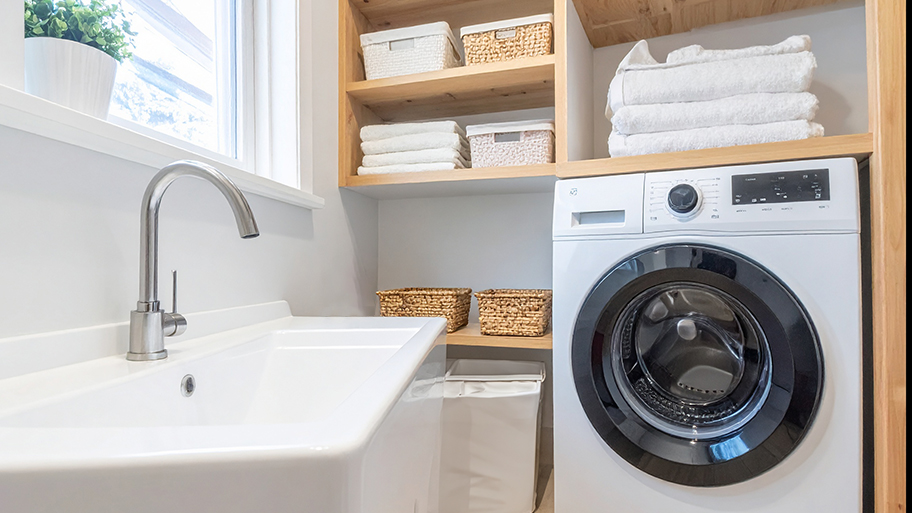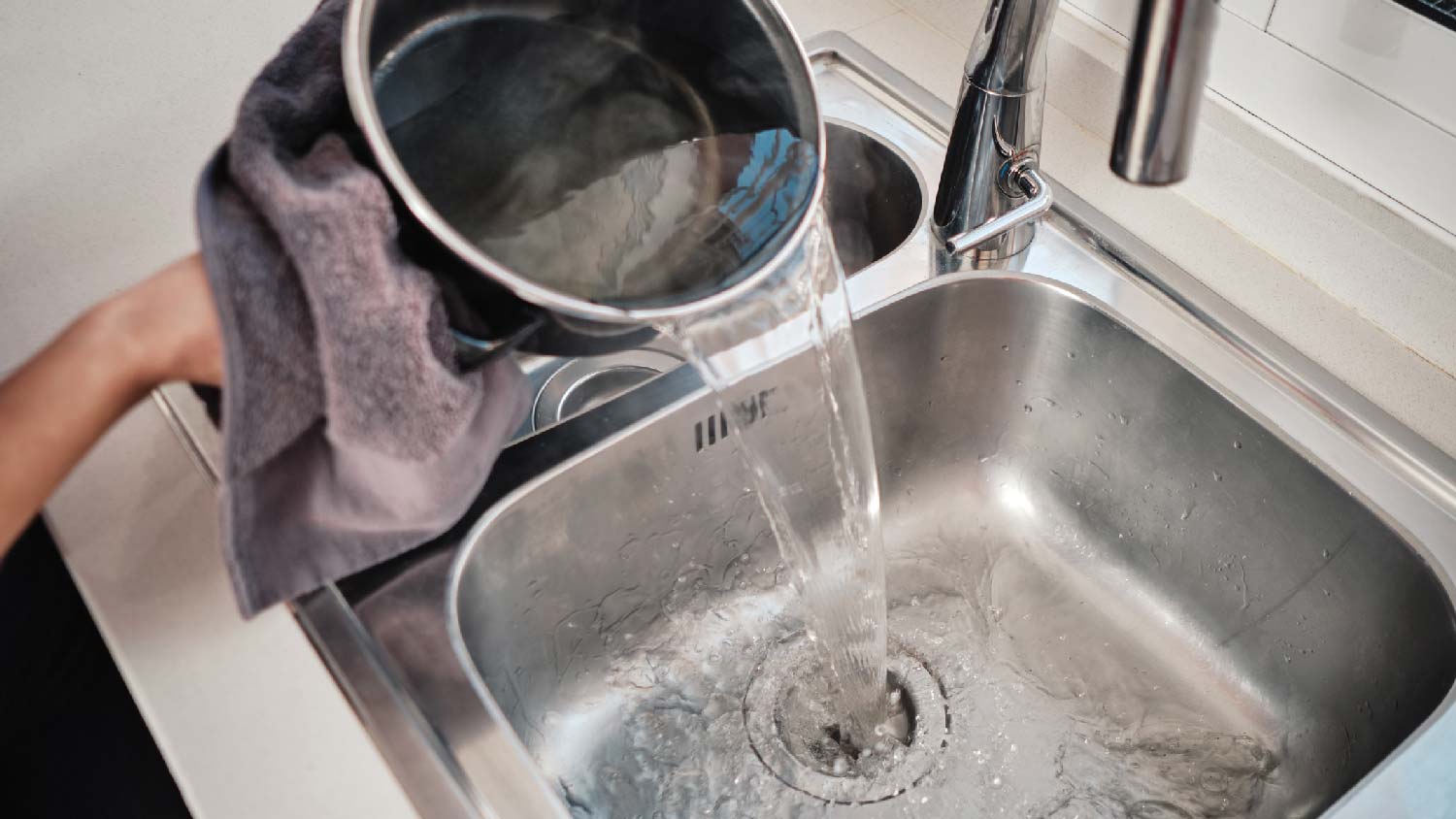
The cost to add plumbing to a detached garage depends on several factors, including the type of plumbing and the garage's distance from your home.
Call a local drain cleaning company to banish drain flies for good


If you’re struggling with drain flies, consider hiring a drain cleaning company to do the dirty work. These pros have the tools, know-how, and skills to clean the built-up drain gunk that lures drain bugs. Here’s where these pests come from, who to call for drain flies, and how to get rid of them once and for all.
Drain flies, sink flies, sewer flies, moth flies, and filter flies are the same thing—tiny, fuzzy, winged insects that seem to come out of nowhere and can be nearly impossible to get rid of. Like other kitchen bugs, they’re not harmful but are frustrating and can make homes feel less clean.
Adult drain flies lay eggs in stagnant water and decaying organic material, making drainpipes a perfect location for them to start families. Hatched larvae feed on drain sludge, and when they mature, you’ll see an unending parade of tiny invaders bumbling around your kitchen, close to the sinks they emerged from.
Maybe you’ve tried pouring boiling water down your drains, using specialty cleansers, or putting out bowls of soapy water to catch itty-bitty drain flies. But when that fails, call a local drain cleaning service to take care of the root of the problem—the goo and grime that coats the insides of pipes and creates a fertile breeding ground for these annoying pests.
The good news is that hiring a professional drain cleaning service is relatively wallet-friendly and has more than one upside. Along with getting rid of the gunk that attracts and nourishes sink flies, drain cleaning also helps prevent clogs and keeps your pipes running smoothly.
Pest control companies can get rid of drain flies, at least temporarily, by applying targeted treatments to infested areas and neutralizing adult sink flies, eggs, and larvae.
However, it’s almost impossible for pest control technicians to kill every egg and larvae. Even if they do, sewer flies thrive on the muck that accumulates inside drainpipes, so there’s a chance they’ll keep coming back as long as those conditions still exist. Most exterminators can’t address that problem, so hiring a drain cleaner is the best long-term solution.
Drain cleaners have their own methods, but most use similar strategies to eliminate drain flies and the conditions that encourage them to thrive. Your drain cleaning company will suggest and perform the following steps:
Pipe inspections to determine the location of the infestation
Deep cleaning and scrubbing drainpipes where drain flies collect and lay their eggs
Treating pipes with insecticides or antimicrobial cleansers to prevent reinfestation or continued microbe growth that encourages drain flies
Repairing any leaks or cracks in plumbing lines that can attract insects
Preventative maintenance, such as regular drain cleaning
A simple drain cleaning will cost about $250, but it ultimately depends on the job's complexity and whether underlying issues contribute to the drain flies.
Most plumbers charge for their time and materials, but some can offer a base service fee that covers their travel to your home and the first hour or so of work. For a standard cleaning to eliminate drain flies, the base fee can cover the entire job since it’s a relatively straightforward process.
If your drain fly problem extends to multiple drains or reveals more serious issues, costs will increase. Damaged pipes or extensive buildup require more time and specialized equipment, so the final bill will be higher than what you first estimated.
Still, hiring a pro can help you save money in the long run, especially if cleaning the drain to get rid of flies uncovers more serious problems that could lead to an emergency in the future.

If you hope to make drain fly removal a DIY project, prepare for a long and frustrating fight. Drain flies reproduce quickly, so eliminating the adults will barely make a dent in the population. Plus, they’re known to disappear and reappear in waves, so it’s not uncommon to think you’ve solved the problem only to find more sewer flies days or weeks later.
Still keen to DIY it? Here are a few methods you can try if you’re wondering how to get rid of drain flies yourself:
Scrub the insides of your drains with a pipe brush. Get in as deep as you can to remove grime and organic matter.
Pour boiling water down the sink to flush out the gunk you scrubbed loose. (Avoid this method if your sink or drain lines are susceptible to damage from boiling water. Repeatedly pouring boiling water down pipes can soften joint glue and cause leaks over time. Never pour boiling water down PVC pipes, which can melt.)
Try a biological drain cleaner. These enzyme- or bacteria-based cleansers break down organic matter, leaving less material for drain flies to breed in.
Create a DIY drain-fly trap using a mixture of equal parts vinegar, sugar, and dish soap. Fill shallow dishes with the mixture and place them near your drains. The sweet smell will attract adults, and they’ll get caught in the traps.
Be careful what you put down your drains. Food waste turns into drain buildup that gives flies a place to procreate. The less gunk that goes down your drain, the less buildup. So, use a sink strainer to keep drains cleaner.
From average costs to expert advice, get all the answers you need to get your job done.

The cost to add plumbing to a detached garage depends on several factors, including the type of plumbing and the garage's distance from your home.

How much does hydro jetting cost? Learn hydro jet drain cleaning prices based on factors like the extent of the clog, accessibility, and more.

A leaky faucet can lead to costly water damage and a lot of wasted water. Learn how much it costs to fix a leaky faucet based on type, part and labor.

Insulating your pipes is a simple DIY project that can prevent costly damage and lower your energy bills. Learn how to insulate your pipes yourself with this easy guide.

Read how to properly vent your toilet, sink, and shower and learn the importance of effective plumbing ventilation to ensure a well-functioning and odor-free bathroom.

Whether your outdoor spigot is leaking, damaged, or has unusual water pressure, learn how to replace a spigot valve in an hour or less.